Hello Pretty at Business of Design, PART ONE: TRENDS
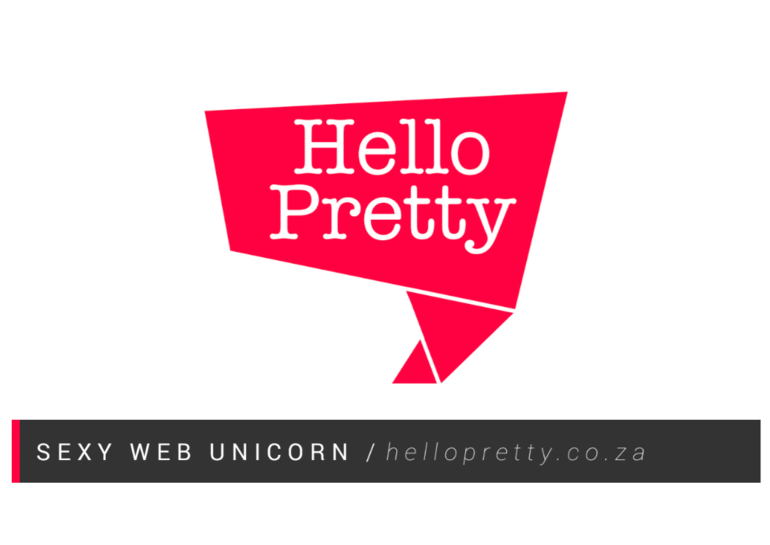
**Hello lovelies!
We were recently fortunate enought to join the Business of Design conferences as speakers, discussing the move towards online. It was such a cool experience, and we met the most amazing people.
We felt that some of the things that we had researched and crafted into a presentation might be super helpful to sellers on Hello Pretty - or anyone who is looking to take the steps into ecommerce.
It's a GIANT amount of information (Lesson learnt: a thirty minute presentation is THIRTSY work!), so we've broken it up into two parts for y'all. So go grab a cuppa, and settle in - it's a goodie! **
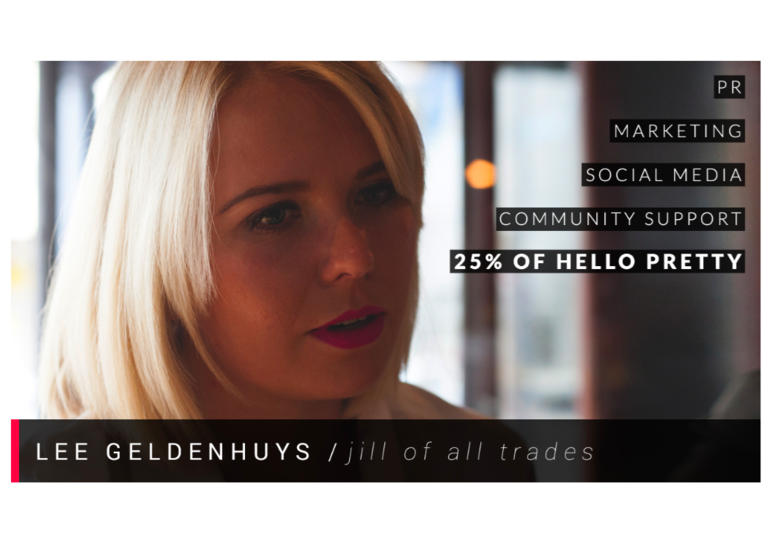

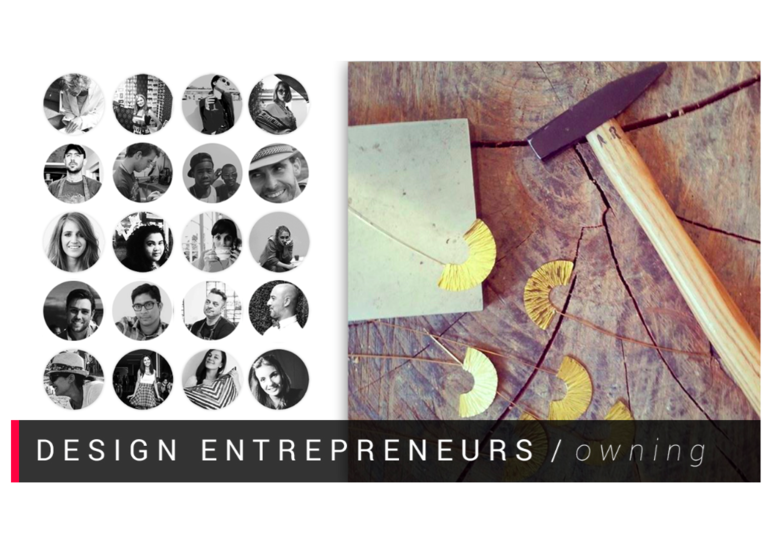
We’re a very small team at Hello Pretty, and as small business owners and people working at startups may know, assigning one job description to anyone tends to be somewhat complicated because you all dive in where you're needed. Should you have to choose only one, you could say that I’m the marketing department.
My brief was for attendees to leave the conference feeling that they've learnt something that they can apply to their own business. We are by no means ecommerce kingpins – we're four people who started out knowing more or less nothing about South African ecommerce, other than the fact that we felt strongly that our local talent needed to be better showcased and nurtured. We had to learn on the job, quickly. And due to the ever changing nature of ecommerce, we've never stopped learning. So we took all of the things we've learnt the hard way, and put it into a talk – hopefully making the move towards online retail a little less daunting for those hoping to take the leap.
I lean heavily on Hello Pretty as a case study – because we're a small business, we're able to experiment a lot more, and more quickly than big corporates. If we see a trend on the rise, we give it a bash. If it works, we drill down into it and leverage it as much as we can. If it fails, we discard it immediately, luckily without massive consequence. We've had to learn to market ourselves with almost no marketing budget. Ideally, discussing what we've picked up can save others some time and stress.
So what is it that Hello Pretty does exactly? We are an online marketplace, where creative entrepreneurs and designers can create and manage their own online stores. We provide a sales and marketing platform, and have tried to remove many of the administrative headaches that often come with entrepreneurship, like building your own online store, invoicing, tech support, and managing payment gateways. We also offer broad shoulders to cry on!
We’re really in the “small business owner trenches” with our designers - we’re here to help, because we’ve been through it all as well, and we’ve got the emotional scars from the struggle, and the physical scars from beating our heads against bureaucratic walls thanks to paperwork and red tape. Every choice we've made that affects our sellers bears that in mind – we try be the service we ourselves would use.

So elevator pitch aside, Hello Pretty exists to help elevate other small businesses. We are currently sitting at 1500 sellers, selling over 20 000 products. They range from students with a passion project, to people whose business is their livelihood. They are no longer hobbyists or occasional crafters - they are a vital, thriving, and necessary part of the economy, and invaluable citizens of the global design community. Those who have successfully grown their business past a 1 or 2 person operation further contribute by making use of local fabricants, workshops and CMTs, teaming up with NGOs, and hiring in-house.
Why is this important in the context of ecommerce? Entrepreneurial activity is an essential source of economic growth and social development. While all avenues of business are important, it’s high potential entrepreneurs, focused on growing their businesses, who are responsible for a large amount of expansion in the economy, setting in motion the creation of other employment opportunities down the line. So what we’re all crafting has a ripple effect that is potentially boundless.
The strictly practical element aside, having a viable platform to expand their business means that these entrepreneurs are able to follow their heart and do work they love, work from home if that’s what they prefer, and create their own version of independence. One reason I personally feel so strongly about this is because this is exactly what Hello Pretty has done for me, and why I’m standing in front of you today. Furthermore, with over a third of our traffic being international, thank you internet, we get downright warm and fuzzy about the fact that we’re also opening doors for our designers on the global stage.
At this point people often ask, yes but you’re a startup in a pretty flooded market - how do you compete with ecom giants like Takealot for example? We don’t. We thank them. We exist alongside them. It’s thanks to the likes of them that online shopping has become so much more normal and accepted in South Africa - it’s no longer this terrifying and untrustworthy thing. Someone who has bought something on Takealot is far more likely to shop with us. With you.
As for other niche competitors, we all have the same goals. Our co-founder and developer, Scott, is from Vancouver, and tells this great story about how in Portland there is an amazing coffee shop on every street corner. How do they all survive? Because they’re not trying to take money from each other - they’re trying to educate people about their craft. The value of it, the nuances of the trade. How special it can be. They’re trying to draw focus from the likes of Starbucks and McCafe’s, who, it can be argued have stripped the value from their trade somewhat.
That’s what we’re all doing. We’re teaching people that you don’t have to go to Country Road
for great products. We have people making those things with love and by hand right here, who are creating jobs for other South Africans in the process. With the added exposure that the power of the internet brings, the possibilities are endless, and applies not only to the handmade items that we deal with, but to anything that you’re trying to sell.
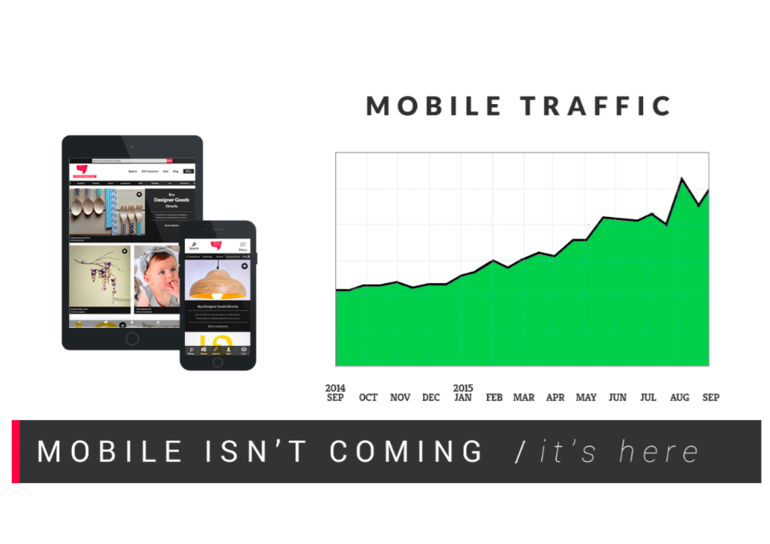
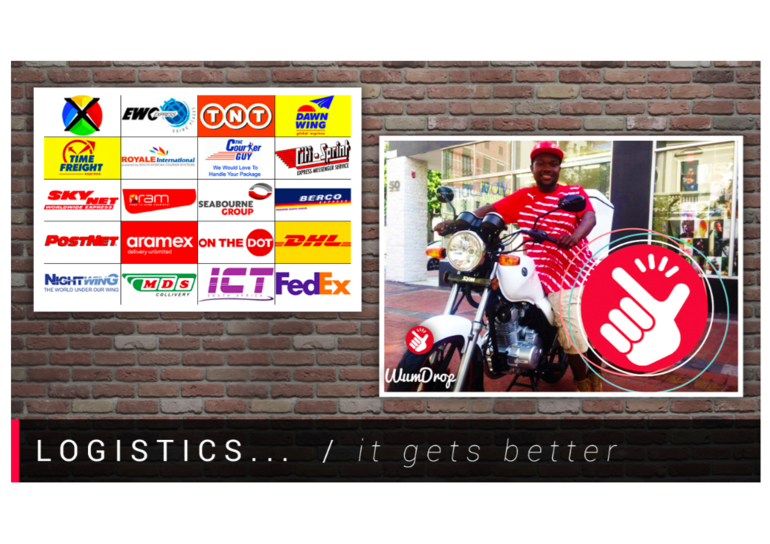
As with all new ventures, and especially with something as fast paced and ever changing as the general digital landscape, important factors to consider when setting up shop are always general trends. This can sound and seem completely overwhelming, but when you’re choosing your platforms for example, having a responsive, mobile friendly design can make a huge difference to how easy it is to fnd you, and then buy from you.
I mention responsive, mobile friendly platforms frst because mobile isn’t coming. It’s already here. With this year’s Googlegedon, where Google announced they would penalise or downrank sites that weren’t mobile friendly, businesses everywhere suddenly had a fire lit under them to jump on board the responsive design train. (Us included, which brought forward our recent redesign timeline by months) Whatever platform you choose needs to bear this in mind, since it could lose you hard-won web capitol, not to mention access to millions of smartphone users you want to do business with.
The graph you see here shows how mobile traffc on Hello Pretty itself has spiked in the last two years - currently over half of our traffic comes from smartphones and tablets. People are permanently on the go - you need to make it as easy as possible for them to fit buying from you into their lifestyles, so how your site is built is so important. Google, and your wallet, wants you to set up your site for smartphone users. Google, and your wallet, wants customers to have a positive user experience. No one wants to struggle with a diffcult check out process from a phone screen - you'll lose that sale.
Something else that’s important to note is how the internet has completely changed the way consumers behave - they are becoming much more savvy, and are less likely to purchase items at random. They base their decisions on research - price comparison websites, reviews, opinions, etc. I know my entire team can get trapped in a research whirlpool with our online shopping habits. As Cathy mentioned earlier – people are researching “in real life,” and then buying online – and often vice versa. This is important to remember when setting up your site, your store policies and product descriptions.
Another trend that has slowly been on the rise, and one we are cheering on fervently thanks to the grey hairs it’s caused us, is improved logistics, and I'll circle back to this later. We don’t care for drones. You can keep them Amazon. We just want a decent delivery experience - again, this can affect a customer’s user experience, and having to struggle to track down a purchase, or have something arrive in pieces, can leave a poor impression and affect your number of repeat customers. And the worst thing is that it’s something that we often have very little control over.
Couriers are starting to cotton on to the importance of offering an ecom-aligned service - people don’t trust the post offce after the recent upheavals, and shipping locally via a courier is a lot cheaper than people realise. And it can land up being a far less stressful experience for both you and your customer.
There have been huge advances in logistics worldwide. Solutions like Wumdrop’s on demand pickup services are starting to gain momentum and become more prevalent. Very slowly, people are starting to realize that shipping is a service that's worth the cost. In countries like Nigeria, Uganda, and Kenya, the Takealot equivalent, Jumia, bought motorbikes and hired drivers to deliver everything and take payment on delivery, because of lacking logistics systems in the countries and a lack of online payment, credit cards, and consumer trust.
So yes, shipping can seem to be an enormous scary gauntlet to run, but if you are selling products it's worth some trial and error to find the solution that best suits you and your business.


When Hello Pretty started, ecommerce in South Africa was still brand spanking new, and the only way you could get something beautifully made and designed locally was at your local weekend market - now, with online shopping having become much more commonplace, our designers, who are every bit as talented as international creatives, can market themselves to a far wider audience. As a result, they’re not just able to put themselves “on the map” - they’re also putting South Africa on the map. People have started seeing South Africa more and more as a creative force to be reckoned with. The gap between international trends and what's happening here is becoming smaller and smaller.
My colleague Sam has often joked that Hello Pretty is similar to a “pyramid scheme, but awesome” - it’s in our interest to support and nurture entrepreneurs and to help them grow, because as they grow, so do we. And by “we” I don't just mean at Hello Pretty. I mean all of us. As a community, as a country. Your business may feel small to you and selling online may seem like this giant body of water – but throw your small stone into that lake and watch the ripples. Imagine lots of little stones, and how their ripples will start reaching each other, crossing over, becoming more.
We have learnt A LOT through building and operating the site. Some things made a lot of sense, others completely surprised us - and we’ve slowly whittled down a list of things that we have tried ourselves, have had work, have suggested to others and have seen results for them as well. Some may simply seem like common sense, but I assure you it’s not. A lot of people don’t know what they don’t know, or don’t realise how important some tiny detail may land up being.
** HUZZAH! We have reached the end of Part One: Trends. Head over to Part Two, for a break down on how to take your online business to new heights. **



